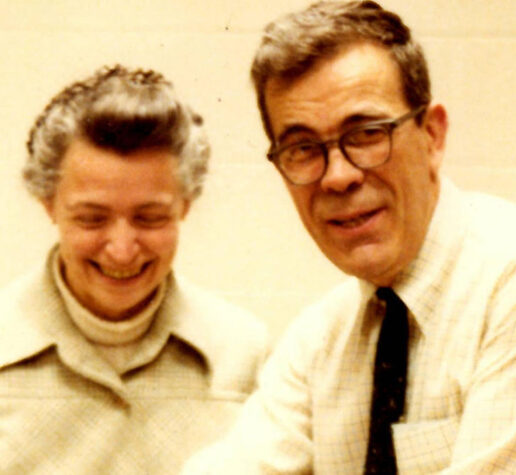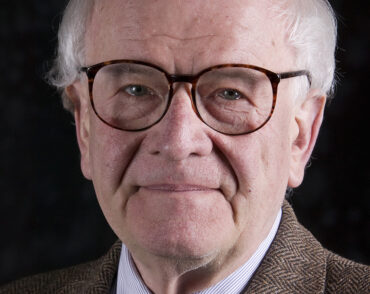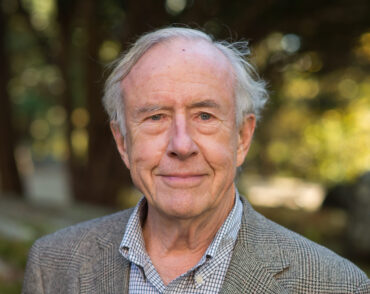
Gene Dresselhaus, influential research scientist in solid-state physics, dies at 91
Over 50 years at MIT, Dresselhaus made lasting contributions to materials science within the research group of longtime collaborator and wife, Mildred Dresselhaus.
Gene Dresselhaus, a longtime research physicist at MIT’s Lincoln Laboratory and later the Francis Bitter Magnet Laboratory at MIT (now part of the MIT Plasma Science and Fusion Center), died peacefully at his home in California on Sept. 29. He was 91.
Dresselhaus was a theoretical solid-state physicist whose work focused on the science of materials. He was an early pioneer behind the physics of what is now known as spintronics, a field concerned with a property of electrons called spin. He is the namesake of the Dresselhaus effect, a phenomenon in which spin can affect the energies of electrons within a material.
“Gene Dresselhaus was a brilliant scientist who will be remembered for his pioneering ideas that shaped modern band theory,” says Leonid Levitov, professor of physics at MIT, adding that his work was “central to current efforts to create hardware for quantum computers by exploiting electrical control of spin qubits, and also guided the recent breakthroughs in the emerging areas of quantum spin-Hall effect and topological materials.”
Dresselhaus was also a close research collaborator of his beloved wife, the late MIT Institute Professor Mildred “Millie” Dresselhaus, who died in 2017. His lifelong encouragement and support of Millie was a key contributor to her success at a time when women were often discouraged from pursuing research in science and engineering. And his contributions to the (Mildred) Dresselhaus research group within the departments of Electrical Engineering and Computer Science (EECS) and of Physics influenced a generation of scientists and engineers focused on the inner workings of materials.
Gene Dresselhaus’s death was closely followed by the public announcement that, jointly with Emmanuel Rashba, he had been awarded the 2022 American Physical Society Oliver E Buckley Condensed Matter Physics Prize — considered the most prestigious award granted within the field of condensed-matter physics — for “pioneering research on spin-orbit coupling in crystals, particularly the foundational discovery of chiral spin-orbit interactions, which continue to enable new developments in spin transport and topological materials.” In a coincidence befitting their long and loving partnership, the Buckley award’s past winners include Millie Dresselhaus, who received the prize in 2008.
As Levitov explains, “His early theoretical work showed how the spin-orbit interaction in zinc blende lattice can lead to spin-orbital interaction in the Bloch Hamiltonian. From this work it became evident that the `spin’ degree-of-freedom in a solid is far more than just spin; rather, it describes spin and carrier velocity intertwined in an inseparable manner. Spin is anchored to electron momentum in predictably different ways governed by crystal symmetry, enabling a plethora of schemes to manipulate and control spins. The Dresselhaus effect, derived directly from the group theory and symmetry considerations, resonates strongly with current interests in the Dirac and Weyl points, and their relation to symmetry and topology of bands in solids. These effects underpin dissipationless spin transport and other beautiful spin-electric phenomena. The significance of these effects, discovered long ago, has grown tremendously in recent years.”
Born November 9, 1929, in the Panama Canal Zone, Gene F. Dresselhaus studied physics as both an undergraduate and graduate student at the University of California at Berkeley, under condensed-matter physicist Charles Kittel. While at UC-Berkeley, he was involved in work that has become, according to Levitov, “a cornerstone of semiconductor physics, the first successful measurement of cyclotron resonance of charge carriers in solids. This work, which paved the way to the development of experimental techniques for determination of electron Bloch bands, relied on the expertise gained by the U.S. physicists during World War II in the development of radar.” Dresselhaus recalled his work on cyclotron resonance in detail in a later memoir.
Next, Dresselhaus performed postdoctoral work at the University of Chicago, meeting his eventual life partner Millie Dresselhaus while she was a graduate student there. The two married in 1958 and moved together to Cornell University, where Gene was hired as junior faculty member and Millie pursued postdoctoral work, both in the physics group of Albert Overhauser. Their first child, Marianne Dresselhaus ’81, was born while the two lived at Cornell.
When Overhauser soon left Cornell for another position, Gene and Millie faced a significant dilemma. At the time, academia’s famous two-body problem was even thornier than it is today, and many research institutions would not hire women, especially if they were married to a male affiliate. While Overhauser had been supportive of Millie, Cornell declined to employ her on a permanent basis after the conclusion of her postdoc. So, Gene decided to give up his professorship so that he and Millie could find a place to work together. When the Dresselhauses received offers from both IBM and MIT’s Lincoln Laboratory, the couple selected MIT, joining Lincoln’s Solid State Division in 1960.
The Dresselhauses had three more children after joining Lincoln Laboratory: sons Carl, Paul ’85, and Eliot. Millie would eventually pursue a professorship at MIT in 1967, while Gene stayed on at Lincoln for another decade before moving himself to the MIT campus in the mid 1970s. All four of their children would grow up in and around MIT, and were fixtures in their parents’ laboratory spaces. Their numerous graduate students also formed a large extended family of sorts, enjoying the titles of “aunt” and “uncle” to the Dresselhaus children and building close relationships based on the love of science and experimentation.
Gene and Millie Dresselhaus would prove their commitment to each other many times over during the decades to follow, supporting each other through all the challenges that both science and parenthood could present. “When [Millie] hit hurdles, [Gene] encouraged her. When she faced discrimination, he defended her,” daughter Marianne recalled many years later, in an essay coauthored with her own daughter Shoshi, about Gene and Millie’s remarkable partnership. “When she became president of APS [the American Physical Society], he declared the chair at the head of the table the ‘President’s Chair’… At the office, they used each of their skill sets to complement the other. Gene let Millie lecture, while he did the figures and the computer work. He was a theorist; Millie was an experimentalist. Millie would write, and Gene would edit. To be a student of one was to be a student of both. They were always a team, throughout their lives.”
Gene Dresselhaus’ research home on the MIT campus was the Francis Bitter National Magnet Lab, later the Francis Bitter Magnet Lab after national funding moved to Florida in the 1990s. There, Dresselhaus worked on Raman spectroscopy and other low energy spectroscopy for materials. Eventually, the Magnet Lab joined with the MIT Plasma Science and Fusion Center, which was where Dresselhaus spent the remainder of his scientific career.
Gene Dresselhaus also contributed unofficially — but unequivocally — to the research group of Mildred Dresselhaus, based in MIT Building 13. He produced thoughtful work in many aspects of physics, especially emerging work on carbon-based materials like nanotubes and later graphene. He was a frequent coauthor with Millie on her copious research papers and eight books, including “Solid State Properties: From Bulk to Nano;” “Carbon Nanotubes: Advanced Topics in the Synthesis, Structure, Properties and Applications;” and “Group Theory: Application to the Physics of Condensed Matter.”
Dresselhaus will be fondly remembered not only by the many generations of graduate students whose careers he helped to launch, but by the coworkers who recalled his great gift for joyful collaboration. Pablo Jarillo-Herrero, Cecil and Ida Green Professor of Physics at MIT, says, “I have very fond memories of Gene Dresselhaus. Besides being a great physicist, he had a great sense of humor, and he was always Millie Dresselhaus’ biggest fan and supporter. They will be remembered as one of the greatest physics couples in history.”
In a remembrance she shared at Dresselhaus’s memorial service, Jing Kong, MIT professor of EECS, said, “It was my great fortune seeing their life example as I was starting my career. Each day around 5 p.m., Millie and Gene would go home together, walking along the hallway, greeting everyone and saying goodbye. I had also heard that they came in together at 5 a.m. This was how Gene put it: ‘You know, when I was retired, Millie asked me if I wanted to come to her lab and work part-time. I discovered part-time is only 12 hours a day.’” The couple’s dedication to their work was matched only by their dedication to the success of their students, former students, and coworkers. Kong added, “On the board outside my office, there are many photos of Millie and collaborators. Each time when someone sent Millie photos, either a new baby, or a graduation, it used to be Gene who would print them out and hang outside Millie’s office proudly. Now these have become treasures in our memories.”
Gene Dresselhaus is survived by his four children and their families: Marianne Dresselhaus Cooper ’81 and husband Geoffrey ’80, ’83; Carl Dresselhaus; Paul Dresselhaus ’85 and wife Maria; Eliot Dresselhaus and wife Françoise; and five grandchildren — Elizabeth Dresselhaus, Clara Dresselhaus, Shoshi Dresselhaus-Cooper, Leora Dresselhaus-Marais PhD ’18 and husband Stephen Dresselhaus-Marais, and Simon Dresselhaus.


